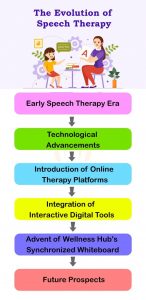8 Effective Tips to Overcome Stuttering During Presentations
By Rajini D
Last Updated: March 2, 2024
Facing a crowd, your heart races, your palms sweat, and just as you’re about to speak, your words seem to stumble and falter. If this sounds familiar, you’re not alone. The fear of presenting is widespread, affecting countless individuals worldwide. But when this fear is compounded by stuttering, the challenge can seem insurmountable. Yet, here you are, seeking solutions, ready to face this head-on—a commendable step toward self-improvement.
At Wellness Hub, we understand the complexities of stuttering and the additional anxiety it brings to public speaking. Our aim with this article is to provide you with 8 effective tips to overcome stuttering during presentations. These are actionable, practical strategies that have helped many of our readers find their voice and speak with confidence. Whether you’re addressing a room of colleagues or delivering a speech at a large event, these tips are designed to help you communicate more fluently, letting your ideas shine without the barrier of stuttering.
Remember, your voice matters. It’s not just about overcoming a speech disorder; it’s about embracing your unique perspective and sharing it with the world. So, let’s embark on this journey together with simple, straightforward advice that speaks directly to you and your experiences.
Understand Your Stutter
Stuttering, often characterized by repeated sounds, prolonged syllables, or involuntary pauses, can significantly impact public speaking and presentations. It’s not merely a speech disorder; it’s a barrier that affects how confidently you communicate your ideas. Understanding your stutter is the first step towards managing it effectively. Recognizing the specific situations, words, or emotions that trigger your stutter can provide valuable insights into overcoming it.
Action Steps:
- Identify Patterns: Keep a journal of when your stutter is most and least noticeable. Are there specific words or situations that exacerbate it?
- Acknowledge Triggers: Notice if your stutter intensifies under stress or certain emotional states. This awareness is crucial for applying targeted strategies to manage it.
For more on understanding speech disorders, consider reading our detailed guide on What is Stuttering?
Prioritize Preparation
Preparation is your ally in the battle against stuttering during presentations. Familiarity with your material can dramatically reduce anxiety, a common trigger for stuttering. Knowing your topic inside out allows you to focus more on delivery and less on recalling information, which can ease the flow of speech.
Action Steps:
- Simulate Presentation Conditions: Practice in an environment similar to where you’ll be presenting. This could mean standing up, using a microphone, or presenting to a small group of friends or family.
- Seek Feedback: Rehearsing in front of a trusted friend or colleague can provide you with constructive feedback. It’s not just about the content but also about pacing, volume, and clarity of speech.
To explore more about how preparation impacts speech, see our article on Speech Therapy at Home, offering strategies for effective practice.
Continuing the Journey with Wellness Hub
As you embark on this journey to smoother presentations, remember that every speaker has their unique challenges and strengths. At Wellness Hub, we’re committed to providing resources and support that cater to the individual needs of our readers. Whether you’re looking for strategies to manage anxiety, improve public speaking skills, or find professional guidance, our platform offers a wealth of information to help you on your path to confidence and clarity.
Slow Down Your Speech
One of the most effective strategies to manage stuttering during presentations is to consciously slow down your speaking rate. This doesn’t mean you have to speak in slow motion; rather, it’s about pacing your words in a way that feels controlled and deliberate. Here are a few techniques to help you achieve this:
- Pausing Technique: Practice inserting short pauses between sentences or even within longer sentences. This gives you a moment to breathe and plan your next words, reducing the likelihood of stuttering.
- Breathing Exercises: Integrating breathing exercises into your speech preparation can significantly control your pacing. Before you begin speaking, take a few deep breaths. Try to maintain this slow and deep breathing pattern as you speak. This not only helps in pacing but also calms your nerves.
- Phrasing Method: Break down your sentences into smaller, manageable phrases. Speak each phrase at a time, taking a slight breath in between. This method helps maintain a steady, slow pace and improves clarity.
Employ Positive Visualization
The power of the mind cannot be overstated when it comes to overcoming stuttering in presentations. Positive visualization is a technique where you imagine yourself delivering a successful and fluent presentation before you actually do it.
How to Practice Positive Visualization:
- Visualize Success: Find a quiet space, close your eyes, and vividly imagine the entire process of your presentation. See yourself speaking confidently, your audience engaged, and reacting positively. Feel the success and the applause.
- Incorporate Sensory Details: Make your visualization as detailed as possible. What are you wearing? How does the room look? What sounds do you hear? The more vivid the scenario, the more impactful the visualization.
- Positive Affirmations: Combine visualization with positive affirmations. Tell yourself, “I am confident,” “I speak fluently and clearly,” or “I am well-prepared and calm.” These affirmations reinforce self-belief and reduce performance anxiety.
Learn more about the power of positive thinking in our article on The Impact of Visual Performance Skills on Learning and Development.
Practice with Mirror Feedback
One of the most insightful practices for anyone preparing to give a presentation, especially those who stutter, is practicing in front of a mirror. This method offers immediate visual feedback, allowing you to observe your facial expressions, body language, and overall delivery. It’s not just about what you say but how you say it; your non-verbal cues can significantly impact how your message is received.
Why Practice with Mirror Feedback?
- Build Self-Awareness: Notice how you naturally move and express yourself as you speak. Are there any gestures or expressions that could be distracting or enhance your delivery?
- Boost Confidence: Seeing yourself speak fluently and confidently in the mirror reinforces self-belief. This positive reinforcement can be incredibly empowering for those who stutter.
- Adjust Body Language: Use the mirror to practice open, engaging body language. Avoid closed-off gestures that might signal nervousness or discomfort.
Read more about body language and communication in The Speech Chain.
Comparing Speech Practice Methods
| Method | Pros | Cons |
|---|---|---|
| Mirror Feedback | Builds self-awareness, provides immediate feedback | May not address deep-rooted issues |
| Mindfulness Techniques | Reduces anxiety, improves focus | Requires consistent practice for noticeable benefits |
| Professional Speech Therapy | Offers personalized strategies, professional guidance | It can be costly, requires commitment to scheduled sessions |
| Self-Guided Exercises | Flexible, can be practiced anytime | Lack of professional feedback may not be as structured |
Embrace Mindfulness and Relaxation Techniques
Mindfulness and relaxation techniques have proven benefits for reducing anxiety and improving focus—two critical elements for a successful presentation. Incorporating these practices into your preparation can help calm your nerves and manage stuttering more effectively.
Mindfulness Exercises:
- Focused Breathing: Spend a few minutes each day practicing deep, focused breathing. Inhale slowly through your nose, hold for a moment and exhale through your mouth. This exercise can be a quick way to reduce stress before and during your presentation.
- Mindful Observation: Choose an object and spend five minutes observing it. Notice its color, texture, and any details you usually overlook. This practice helps train your mind to focus on the present, reducing anxiety.
Our article on Mental Health: Understanding Its Importance delves into how mindfulness can play a crucial role in overall well-being, including communication.
Yoga for Relaxation:
- Simple Poses: Incorporate simple yoga poses into your routine to release physical tension. Poses like the Child’s Pose or Cat-Cow stretch can be particularly effective for relaxation.
- Yoga Breathing: Also known as Pranayama, yoga breathing exercises can help you control your breath and, by extension, your speech pacing and fluency.
For more on mindfulness techniques and their benefits, consider our guide How to Deal with Forgetfulness: Forgetfulness in Students & Forgetful Behavior.
Engage in Regular Speech Therapy or Exercises
Investing time in speech therapy or regular speech exercises can be transformative for individuals looking to manage stuttering effectively. Whether you opt for professional help or decide to follow self-guided exercises, the key to success lies in consistency. Regular practice can significantly improve your fluency, confidence, and ability to convey your message clearly.
Benefits of Speech Therapy:
- Tailored Strategies: A professional speech therapist can provide personalized techniques based on your specific needs, helping you to manage your stutter more effectively.
- Feedback and Support: Ongoing feedback from a therapist or through structured programs can offer encouragement and adjust strategies as you progress.
Self-Guided Speech Exercises:
- Daily Practice: Dedicate a specific time each day to practice your speech exercises. This could include reading aloud, practicing breathing techniques, or working on your pacing.
- Use of Apps: There are several apps designed to help manage stuttering by offering exercises and tracking your progress over time.
Consistency in these practices fosters long-term improvement, turning seemingly daunting presentations into opportunities for you to shine.
For insights into the effectiveness of speech therapy, especially in online settings, read Is Online Speech Therapy Effective?
Embrace Your Voice
Your voice, with all its uniqueness, including its stutter, is a part of your identity as a presenter. Embracing this uniqueness can create a genuine connection with your audience. Authenticity resonates; when you accept and own your speaking style, your audience is more likely to focus on your message rather than how it’s delivered.
Acceptance and Ownership:
- Acknowledge Your Uniqueness: Recognize that your voice and style add to the diversity of perspectives and ways of communicating. Your authenticity is your strength.
- Share Your Journey: If comfortable, sharing your experiences with stuttering can help demystify the issue, reduce any perceived barriers between you and your audience, and inspire others who might be facing similar challenges.
Accepting your unique speaking style is crucial. Our article Autism and Speech: Easy Guide for Parents discusses embracing and supporting unique communication styles.
Techniques and Benefits for Overcoming Stuttering
| Technique | Description | Expected Benefit |
|---|---|---|
| Slow Down Speech | Use pausing and breathing to control the pace. | Reduces chances of stuttering and improves clarity. |
| Mindfulness | Practice focusing on the present moment and breathing to reduce anxiety. | Lowers anxiety levels, improving speech fluency. |
| Positive Visualization | Imagine delivering a successful presentation, focusing on success and audience engagement. | Boosts confidence and reduces pre-presentation nerves. |
| Practice with Mirror | Practice speeches in front of a mirror to observe and improve facial expressions and body language. | Increases self-awareness and confidence in delivery. |
| Speech Therapy Exercises | Engage in targeted speech exercises recommended by professionals. | Enhances speech fluency through structured practice. |
| Embrace Your Voice | Accept and own your unique speaking style, including any stutter. | Fosters authenticity, connecting better with the audience. |
| Regular Practice | Dedicate time daily to practice speech techniques and exercises. | Solidifies speaking skills and builds long-term confidence. |
| Engage in Relaxation Techniques | Incorporate relaxation practices like yoga or focused breathing into your routine. | Reduces physical tension and mental stress, aiding smoother speech. |
Conclusion
Managing stuttering during presentations requires exploring a variety of strategies, each offering a unique approach to enhancing fluency and building confidence. From the benefits of speech therapy and the insightful feedback gained through mirror practice to the calming effects of mindfulness and the power of embracing one’s voice, there’s a broad spectrum of techniques available. This diversity highlights the importance of experimenting to discover what methods resonate most with your personal experience. It’s crucial to remember that success in managing stuttering lies in perseverance, an open mind, and a commitment to self-improvement and acceptance.
At Wellness Hub, we champion the journey toward effective communication, acknowledging the individual paths our readers take to overcome challenges like stuttering. Your voice, with its unique characteristics and capabilities, holds immense value, and sharing it confidently is a goal well within your reach. We invite you to utilize the resources and support available on our platform as you continue to explore, practice, and refine the strategies that work best for you. Embrace your progress, stay patient with your process, and know that every step forward is a step toward speaking with greater confidence and clarity.
Frequently Asked Questions
1. What are some effective strategies to overcome stuttering during presentations?
Effective strategies include practicing with mirror feedback, engaging in speech therapy or exercises, embracing mindfulness and relaxation techniques, and accepting your unique voice. Experimenting with these approaches can help you find what works best for you.
2. How can practicing in front of a mirror help with stuttering?
Practicing in front of a mirror allows you to observe and adjust your facial expressions and body language, increasing self-awareness and confidence in your delivery, which can significantly improve your control over stuttering.
3. Can mindfulness and relaxation techniques reduce stuttering in presentations?
Yes, mindfulness and relaxation techniques, such as focused breathing and yoga, can calm nerves and reduce stress, thereby minimizing stuttering during presentations.
4. Is it beneficial to engage in speech therapy for stuttering?
Engaging in speech therapy can provide personalized strategies and support, helping individuals manage their stutter more effectively. Regular practice and feedback from a therapist can lead to long-term improvement.
5. How does accepting and embracing my voice help with stuttering?
Accepting and embracing your voice, including its unique characteristics, such as stuttering, promotes authenticity and confidence. This acceptance can resonate with your audience, making your presentation more engaging and effective.
6. What is the importance of experimenting with different stuttering management techniques?
Each individual’s experience with stuttering is unique; therefore, experimenting with different techniques is crucial to discovering what methods best suit your needs and lead to improvement in your presentation skills.
7. How can Wellness Hub help individuals who stutter?
Wellness Hub offers a range of resources, articles, and support designed to assist individuals in managing stuttering. By providing tips on speech therapy, mindfulness, and self-acceptance, Wellness Hub supports readers in their journey toward more confident speaking.
8. What role does positive visualization play in overcoming stuttering during presentations?
Positive visualization involves imagining yourself delivering a successful presentation, which can reduce anxiety and improve performance. This technique encourages speakers to focus on success, thereby enhancing confidence and reducing stuttering instances.
9. Can regular practice really make a difference in how I manage my stutter during presentations?
Yes, regular practice plays a crucial role in managing stuttering. Consistent practice helps solidify speech techniques, reduce anxiety, and increase confidence, leading to more fluent presentations over time.
10. Are there any specific exercises recommended for people who stutter to prepare for presentations?
Specific exercises that can help include breathing techniques for relaxation, practicing speech pacing and phrasing, and engaging in mindfulness activities to reduce stress. Additionally, speaking exercises that focus on fluency and articulation can be beneficial in preparation for presentations.
About the Author:
Rajini Darugupally
M.Sc., Speech-Language Pathologist (9+ years of experience)
Rajini is a passionate and dedicated Speech-Language Pathologist with over 9+ years of experience, specializing in both developmental speech and language disorders in children and rehabilitation in adults. Driven by a desire to empower each individual to find their voice, Rajini brings a wealth of experience and a warm, genuine approach to therapy.
Currently, at Wellness Hub, she thrives in a team environment that values innovation, compassion, and achieving results for their clients.
Connect with Rajini to learn more about how she can help you or your loved one find their voice.
Book your Free Consultation Today
Parent/Caregiver Info:
Client’s Details:
* Error Message









